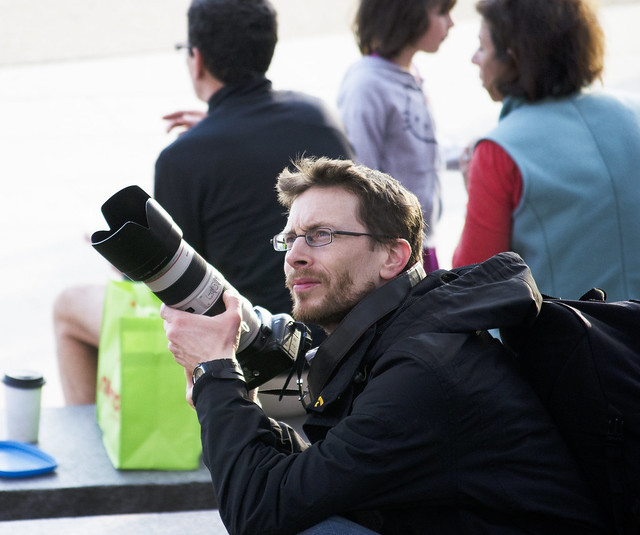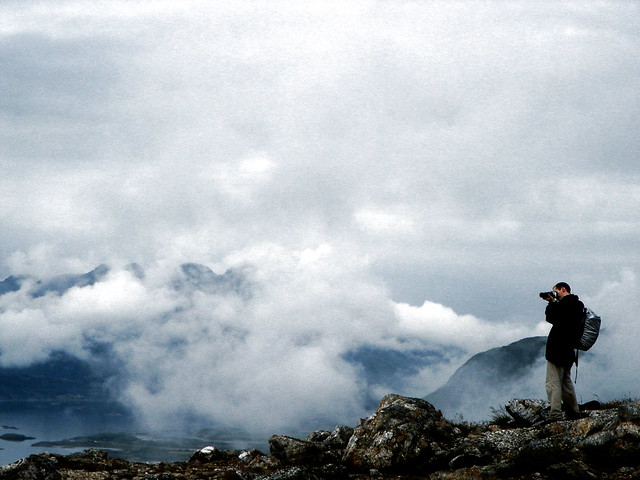
They say patience is a virtue. Sadly not all of us can be so virtuous, time is money and if it’s not it’s still precious. As photographers we often fall into the trappings of modern day life, rushing here and there to capture every last detail of a location or event.
The problem is we should be aiming for, to coin another well-used phrase, quality not quantity. Patience in photography is something we should be aiming for. For some of us, it does not come easily and sometimes it might not be appropriate, shooting sports for example. However, train patience into your photography and you will be able to call on it when needed. Today we will look at some ways to slow yourself down.
Lower the Camera and Look With Your Eyes for More Powerful Compositions
Many of us walk around with the viewfinder glued to our eyes. To problem with this is we get a kind of tunnel vision, not seeing important things that in our periphery that could make great photos.
Next time you are out shooting, lower that camera and force yourself to look at the scene around you. Set a mental time limit, 2 minutes, 5 minutes, and use that time to just look around at your surroundings. You will be surprised at just how many new, more creative ideas for images you will see just by taking some camera downtime.
Try to do this at each and every location that you are shooting and it will soon become a habit, not a chore.

Just lower the viewfinder and look: By Tim Evanson
How Planning for Less Shooting Can Give Better Results
Another problem that many of us encounter is trying to do too much in one day. We plan on Google Maps how long it will take to walk between locations but fail to factor in nearly enough time to actually shoot.
Rather than trying to cram as many locations into one day, pick two. Ideally, you can shoot one in the early golden hour, the other in the late golden hour. By restricting yourself to just two locations, you have time to arrive early, look around get the feel for a place before committing to shoot it.

Take your time, cover less. By ben.gallagher
This is What You Should Shoot in Manual Mode
Nothing teaches you patience like learning to shoot manually. Start by slipping that exposure dial from P to M. Shooting manual exposure requires you to really look at your viewfinder before shooting. What’s my shutter speed? Is my aperture too small? Will I get noise at this ISO?
These are all questions you have to mentally ask yourself before committing to the shot. You will also need to check the histogram after the shot to see if you have nailed the exposure.
Once you are comfortable with manual exposure, click that lens onto manual focus. This is another element of the photographic process that needs patience and forethought. You need to decide on what is the point of focus rather than relying on a camera’s multiple focus points to decide for you.
You also have to focus that lens on the said point, not always easy. It requires you to slow down, think and examine the scene in much more detail than your would before. Once you have taken the shot there is a good chance you will want to check the focus by magnifying it on your LCD screen. All this contributes to slowing you down and making you a more thoughtful photographer.
As you're now learning the importance of taking your time, our Guide to Advanced Composition could be just what you need to take your images to the next level.
Use a Tripod for These Reasons
Heavy, yes. Cumbersome, yes but carrying a tripod can have two major benefits to your photography. Firstly in many situations you can get a much better shot technically:
- No camera shake
- Lower noise
- Sharper focus – all benefits of using a tripod
More importantly, they slow you down. As well as the physical process of setting up the tripod and mounting the camera, composition will be slower. You need to carefully get the tripod head into position and make micro adjustments before you even consider shooting. Once locked off, you will find yourself more eager to shoot manually as we talked about above. The whole process not only teaches you patience but may help with your technique and composition. The simple act of taking the time to set up the tripod makes you slow down and assess your scene, which can only be a good thing when you're looking for improved compositions.

Tripods force you to be patient: By Zach Dischner
Learning to be patient in photography is not easy, particularly when we are new to it. Our natural tendency is to raise that camera to our eyes and shoot away. By doing this we are missing so many great opportunities for shots. Try one or more of the tips provided above to slow yourself down and you may find that you see a change in the type and style of image you produce.
Further Resources on Camera Craft
- Advanced Composition by Kent DuFault – This is a guide to take your photos beyond the rule of thirds.
- Intro to DSLR Photography by Brent Mail – A great primer at coming to terms with the complexity of a DSLR
- The Creativity Catalogue by Kent Dufault – When you're running out of ideas, this is the guide to turn to.




